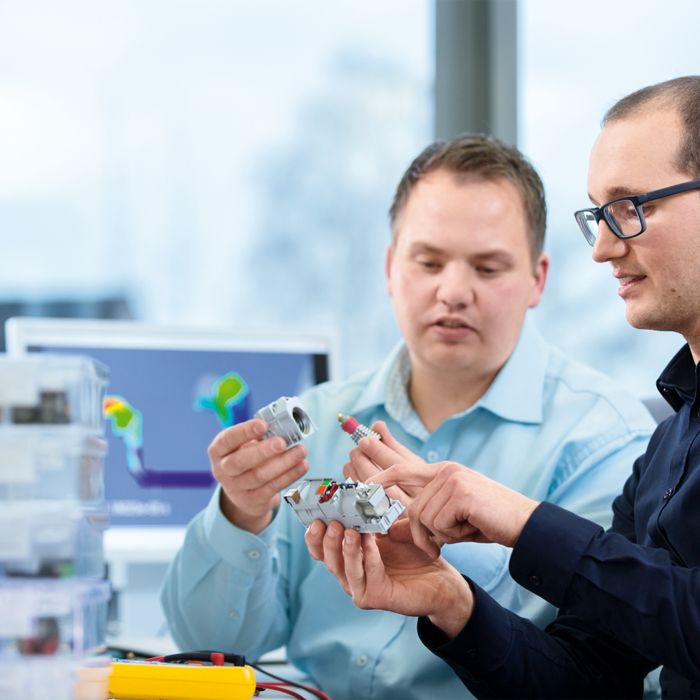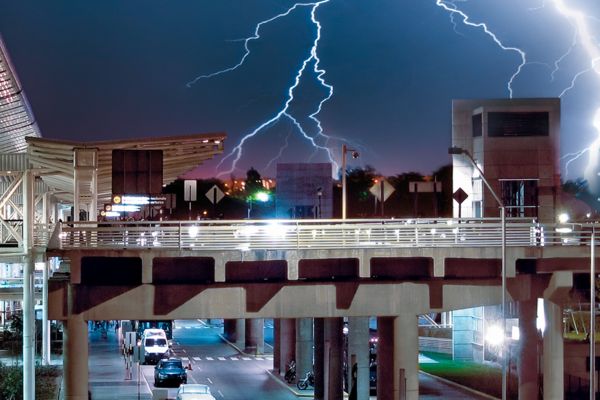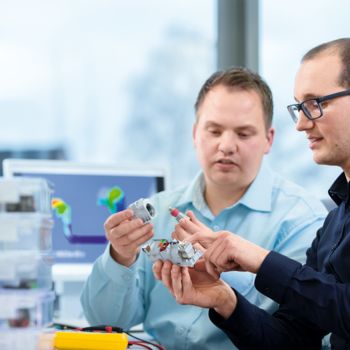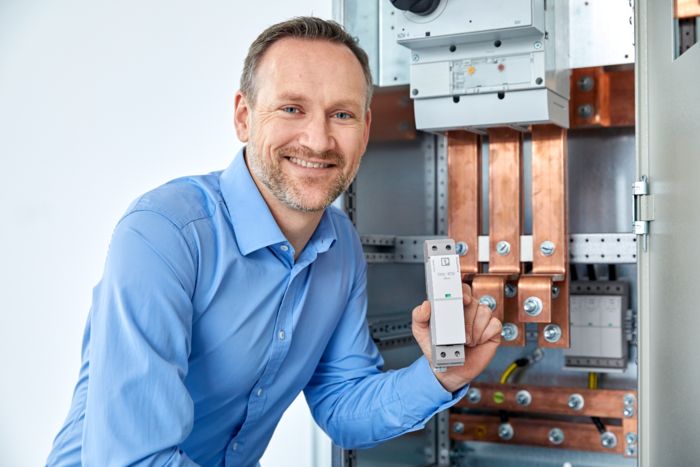
An understanding of physical relationships and solid electromechanical expertise in the field of surge protection for high-quality products.

Along with the development and production of surge protective devices, our experience when it comes to fundamental research also helps us develop monitoring systems for lightning events. Below you will find the basics of lightning and surge protection as well as information on our lightning monitoring system.
We rely on excellent expert knowledge throughout the entire production process.







An understanding of physical relationships and solid electromechanical expertise in the field of surge protection for high-quality products.

Optimum solutions for every application.

Easy-to-install products for easy handling.

Tested products for maximum safety.

Maximum precision in the product.

Maximum product quality with 100% final inspection.
Spark gaps are the powerful components inside surge protective devices. They are able to safely discharge very high currents. Development ranged from open, free-blowing to encapsulated spark gaps. But there was still one problem. The high line follow current.
In 2015, Phoenix Contact brought the first spark gap onto the market that works so perfectly that no more line follow currents occur. This new spark gap is extremely powerful and, due to the fact that there is no line follow current, is also very durable.

Surge protection in large-scale main power distributions
Surge protection in the incoming supply is now standard. This is easily implemented in residential buildings, as the size of the backup fuse usually means that the SPD will not require additional fuse protection.
However, things are quite different in large-scale main power distributions. There are very few backup fuses smaller than 315 A – so a backup fuse is required for the SPD. This backup fuse costs space, money, and valuable cable length. However, space and costs are only a minor issue in this case. The cable length rapidly becomes critical. Find out here about the technical background and our solution.

Surge protection for photovoltaic systems
In addition to a desire to protect the environment, a photovoltaic system is often installed with the express aim of becoming independent from the energy provider.
An investment in a photovoltaic system is expected to last at least 20 years. This is a long period of time where a lot can happen. Like all electrical devices, PV systems are also sensitive to overvoltages: components such as inverters, PV panels, battery storage systems, and cables can all suffer damage. Effective protection against overvoltages therefore increases the operational safety of the system and also provides security for the owner. On the relevant individual pages, we will show you that this protection is not complicated or costly.

High-availability infrastructure
Progressive digitalization is placing ever-growing demands on the availability of today’s systems and services. One example of this is the 5G cellular standard. The networked automation systems must be capable of continuous and error-free operation. A connection malfunction or breakdown can result in failures and high follow-up costs in the production process. The dangers in the event of a mains failure are even greater for future applications, e.g., networked vehicles and autonomous driving.

The NFPA 79 (Electrical Standard for Industrial Machinery) specifies the use of surge protective devices (SPDs) in machines with safety circuits for the North American market.
The state where the machine will be operated determines which edition is valid. This means that various editions are valid throughout North America. It is therefore advisable to always take the latest edition into consideration.
Find out here which mandatory requirements from NFPA 79 are applicable for the use of SPDs.

Surge protection for residential buildings
When it comes to private residential buildings, surge protection likewise starts at the incoming supply. Depending on the ambient conditions, there are a few things you need to consider when choosing the appropriate protective devices. This section covers these points, and also provides some background information on selecting the appropriate protective devices for residential buildings.

Surge protection for industrial buildings
The choice of suitable surge protective devices for industrial plants differs from surge protection for residential buildings. Due to the higher voltages, different ambient conditions, and protection of data and signal lines, more powerful products are required. Here you will find a selection of surge protection solutions for industrial buildings along with further information.

QUINT POWER power supply and PLT-SEC surge protection
A long service life and high availability are the foundation for industrial systems in production companies. Advancing digitalization and a steadily increasing level of automation are placing ever higher demands on every single component. In order to achieve meaningful protection and a long service life for the end devices, and thus to also be able to produce them cost-efficiently, well-coordinated components are crucial.
PLT-SEC surge protection and QUINT POWER power supplies are one of our perfect teams. The components are coordinated ideally with each other. In this way, they contribute to even higher system availability.

Surge protection for video surveillance systems
Whether in traffic control systems, access control, or the monitoring of sensitive plant areas, video surveillance systems have become indispensable. Learn how to protect your camera systems against damage caused by lightning and overvoltages here.

Pulse and high-current laboratory
Powerful, qualified, and accredited
Covering 1,300 m² of space, Phoenix Contact operates a modern, high-performance, accredited laboratory which is specially designed for testing surge protective devices. Here, among other things, disruptive events can be simulated, such as those that occur in the event of lightning strikes, switching operations, or electrostatic discharge.